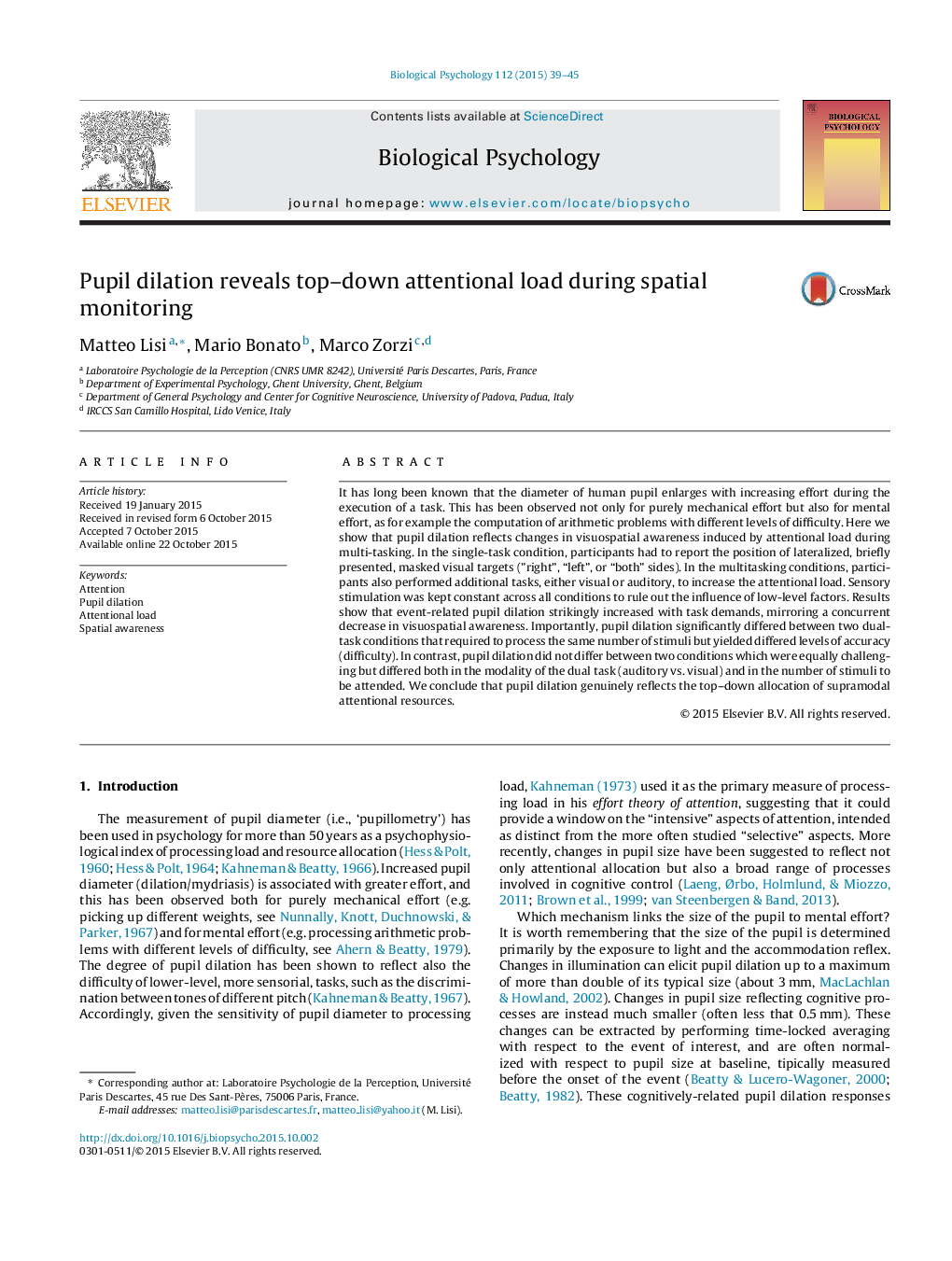| Article ID | Journal | Published Year | Pages | File Type |
|---|---|---|---|---|
| 920775 | Biological Psychology | 2015 | 7 Pages |
•Event-related pupil dilation was measured in a multi-task paradigm.•A common spatial task was used to measure visuospatial awareness across conditions.•Pupil dilation closely matched changes in visuospatial awareness.•Similar results were found regardless the sensory modality of the secondary task.•Results suggest the engagement of high-level supramodal attentional resources.
It has long been known that the diameter of human pupil enlarges with increasing effort during the execution of a task. This has been observed not only for purely mechanical effort but also for mental effort, as for example the computation of arithmetic problems with different levels of difficulty. Here we show that pupil dilation reflects changes in visuospatial awareness induced by attentional load during multi-tasking. In the single-task condition, participants had to report the position of lateralized, briefly presented, masked visual targets (”right”, “left”, or “both” sides). In the multitasking conditions, participants also performed additional tasks, either visual or auditory, to increase the attentional load. Sensory stimulation was kept constant across all conditions to rule out the influence of low-level factors. Results show that event-related pupil dilation strikingly increased with task demands, mirroring a concurrent decrease in visuospatial awareness. Importantly, pupil dilation significantly differed between two dual-task conditions that required to process the same number of stimuli but yielded differed levels of accuracy (difficulty). In contrast, pupil dilation did not differ between two conditions which were equally challenging but differed both in the modality of the dual task (auditory vs. visual) and in the number of stimuli to be attended. We conclude that pupil dilation genuinely reflects the top–down allocation of supramodal attentional resources.
Graphical abstractFigure optionsDownload full-size imageDownload as PowerPoint slide
